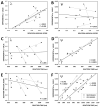Visual P2-N2 complex and arousal at the time of encoding predict the time domain characteristics of amnesia for multiple intravenous anesthetic drugs in humans
- PMID: 20613477
- PMCID: PMC2910207
- DOI: 10.1097/ALN.0b013e3181dfd401
Visual P2-N2 complex and arousal at the time of encoding predict the time domain characteristics of amnesia for multiple intravenous anesthetic drugs in humans
Abstract
Background: Intravenous anesthetics have marked effects on memory function, even at subclinical concentrations. Fundamental questions remain in characterizing anesthetic amnesia and identifying affected system-level processes. The authors applied a mathematical model to evaluate time-domain components of anesthetic amnesia in human subjects.
Methods: Sixty-one volunteers were randomized to receive propofol (n = 12), thiopental (n = 13), midazolam (n = 12), dexmedetomidine (n = 12), or placebo (n = 12). With drug present, subjects encoded pictures into memory using a 375-item continuous recognition task, with subsequent recognition later probed with drug absent. Memory function was sampled at up to 163 time points and modeled over the time domain using a two-parameter, first-order negative power function. The parietal event-related P2-N2 complex was derived from electroencephalography, and arousal was repeatedly sampled. Each drug was evaluated at two concentrations.
Results: The negative power function consistently described the course of amnesia (mean R = 0.854), but there were marked differences between drugs in the modulation of individual components (P < 0.0001). Initial memory strength was a function of arousal (P = 0.005), whereas subsequent decay was related to the reaction time (P < 0.0001) and the P2-N2 complex (P = 0.007/0.002 for discrete components).
Conclusions: In humans, the amnesia caused by multiple intravenous anesthetic drugs is characterized by arousal-related effects on initial trace strength, and a subsequent decay predicted by attenuation of the P2-N2 complex at encoding. The authors propose that the failure of normal memory consolidation follows drug-induced disruption of interregional synchrony critical for neuronal plasticity and discuss their findings in the framework of memory systems theory.
Figures
References
-
- Pryor KO, Veselis RA, Reinsel RA, Feshchenko VA. Enhanced visual memory effect for negative versus positive emotional content is potentiated at sub-anaesthetic concentrations of thiopental. Br J Anaesth. 2004;93:348–55. - PubMed
-
- Veselis RA, Reinsel RA, Feshchenko VA, Wronski M. The comparative amnestic effects of midazolam, propofol, thiopental, and fentanyl at equisedative concentrations. Anesthesiology. 1997;87:749–64. - PubMed
-
- Nagashima K, Zorumski CF, Izumi Y. Propofol inhibits long-term potentiation but not long-term depression in rat hippocampal slices. Anesthesiology. 2005;103:318–26. - PubMed
-
- Evans MS, Viola-McCabe KE. Midazolam inhibits long-term potentiation through modulation of GABAA receptors. Neuropharmacology. 1996;35:347–57. - PubMed
-
- Wei H, Xiong W, Yang S, Zhou Q, Liang C, Zeng BX, Xu L. Propofol facilitates the development of long-term depression (LTD) and impairs the maintenance of long-term potentiation (LTP) in the CA1 region of the hippocampus of anesthetized rats. Neurosci Lett. 2002;324:181–4. - PubMed
Publication types
MeSH terms
Substances
Grants and funding
LinkOut - more resources
Full Text Sources








